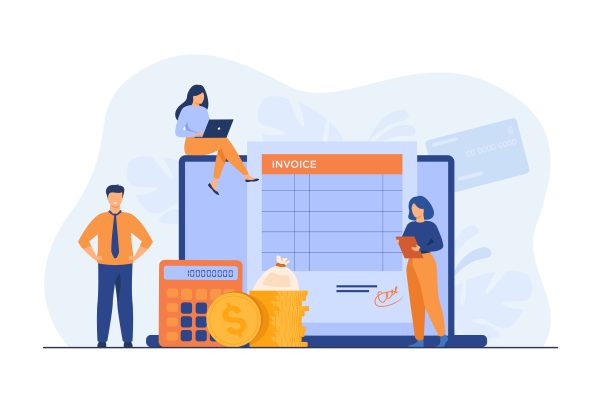
Predictive financial modeling, powered by advanced data analytics, is revolutionizing the way Certified Public Accountants (CPAs) make strategic business decisions. By leveraging statistical analysis and machine learning algorithms, CPAs can forecast revenue, manage risks, and optimize budgeting with unprecedented accuracy. This proactive approach not only enhances financial planning but also provides deeper insights into market trends and customer behaviors, empowering CPAs to deliver more informed and impactful advisory services to their clients.
Understanding Predictive Financial Modeling
Predictive financial modeling refers to the process of using statistical techniques to analyze historical data and forecast future financial outcomes. Essentially, it is a tool within predictive analytics that answers the question, “what might happen in the future?” This modeling is typically achieved using machine learning, data mining, artificial intelligence (AI), and other statistical methods (source).
Core Components and Techniques Used in Predictive Financial Modeling
The core techniques used in predictive financial modeling include regression techniques, pattern analysis, and other statistical methods. These methods help identify patterns and trends within large volumes of data, which can then be used to predict future outcomes (source). Several predictive models are commonly used in finance, including:
- Classification Models: These predict binary outcomes and are often used to guide decisions based on a broad assessment of the subject.
- Outliers Model: This model detects significant deviations in a dataset, making it widely used for fraud detection.
- Time Series Model: This model tracks a particular variable over time and is often used for forecasting trends (source).
Benefits of Predictive Financial Modeling
Predictive financial modeling offers several benefits to businesses, particularly in the financial sector. It is widely used for forecasting future cash flows, reducing costs, decreasing the likelihood of fraud, and even improving employee welfare by eliminating some manual tasks in organizations (source).
Specifically, it can help in:
- Risk Management: Predictive analytics generate forward-looking insights that help determine the risk of a loan or investment, assisting financial institutions in making informed decisions for both their customers and organizations.
- Forecasting Revenue: Predictive analytics models can predict how a stock might perform or how much interest an organization can collect on loans, directly translating to revenue.
- Budgeting: Predictive analytics can help cut the costs of budget building by providing accurate future financial predictions (source).
Thus, predictive financial modeling can be a vital tool for Certified Public Accountants and other financial professionals, enabling them to make data-driven decisions and provide deeper insights to their clients.
The Role of Data Analytics in Predictive Financial Modeling
Advanced data analytics plays a crucial role in enhancing the accuracy and reliability of predictive financial models. By utilizing predictive analytics techniques such as big data mining, statistics, machine learning, and AI, CPAs can analyze large volumes of data to uncover trends, patterns, and correlations that are essential for making informed predictions (source).
Types of Data Essential for Effective Predictive Modeling
Effective predictive financial modeling relies on various types of data. Key data sources include:
- Historical Financial Data: Past financial performance metrics provide a foundational basis for forecasting future trends.
- Market Trends: Understanding broader market movements helps in contextualizing financial predictions.
- Customer Behavior: Insights into how customers interact with products or services can significantly impact revenue forecasts and risk assessments (source).
Data Analytics Tools for Processing and Analyzing Large Datasets
Handling and analyzing large datasets require specialized tools designed for big data analytics. These tools can collect, process, clean, and analyze both structured and unstructured data from various sources. They store data in accessible data warehouses and enable business intelligence solutions to identify patterns and trends within the data (source).
Enhancing Model Accuracy and Reliability
The quality of data used in predictive models is paramount. Poor data quality can lead to inaccurate predictions and suboptimal decision-making. Ensuring high predictive data quality can significantly improve the accuracy of these models, leading to better business operations, reduced risks, and cost savings (source).
Reliable predictive models are built using the right dependent and independent variables and are managed based on the model’s assumptions. The stability of business processes and the chosen time horizon for prediction also play crucial roles in the reliability of these models (source).
In the context of Minute7, accurate time and expense tracking data can serve as a valuable input for predictive financial modeling. This enables businesses to make strategic decisions based on reliable data, further streamlining their financial planning processes.
Practical Applications and Best Practices for CPAs
Predictive financial modeling is transforming the financial landscape by providing powerful tools for CPAs to enhance their advisory services. Let’s explore some real-world applications and best practices for implementing predictive modeling effectively.
Real-World Examples of Predictive Financial Modeling
-
Cash Flow Forecasting: Predictive models can forecast cash flow by analyzing historical data and identifying trends. This helps businesses plan for future cash needs and avoid liquidity issues. For instance, predictive analytics can identify seasonal trends in cash flows, enabling better preparation for high and low cash periods (source).
-
Investment Planning: By using predictive models, CPAs can provide clients with data-driven investment advice. These models can analyze market trends, historical performance, and risk factors to predict the potential returns of different investment options (source).
-
Client Advisory Services: Predictive modeling helps CPAs offer more precise and strategic advice to clients. For example, by predicting customer payment patterns, CPAs can advise businesses on credit policies and collection strategies to reduce the risk of defaults (source).
Best Practices for Implementing Predictive Modeling
-
Data Collection Methodologies: Effective predictive modeling starts with comprehensive and accurate data collection. CPAs should gather data from various reliable sources, ensuring it is clean and relevant. This includes financial statements, market data, and customer behavior analytics (source).
-
Selecting Appropriate Software Tools: Choosing the right tools is crucial for modeling success. CPAs should leverage software that integrates well with their existing systems, such as Minute7, which offers seamless synchronization with QuickBooks. This ensures that the data used in models is up-to-date and accurate (source).
-
Model Validation and Continuous Improvement: Predictive models should be validated regularly to ensure their accuracy. CPAs should continuously monitor the performance of their models and update them as new data becomes available. This practice helps in maintaining the reliability and relevance of predictive insights (source).
Importance of Continuous Learning
The field of data analytics and predictive modeling is rapidly evolving. CPAs must stay updated with the latest technologies and methodologies. This includes gaining proficiency in data analytics tools, machine learning algorithms, and understanding the implications of emerging technologies like AI and RPA (source).
In conclusion, predictive financial modeling offers CPAs a robust framework for making informed business decisions. By following best practices and leveraging tools like Minute7 for accurate time and expense tracking, CPAs can enhance their advisory services, providing deeper insights and value to their clients.
Transforming Financial Strategies with Predictive Modeling
Predictive financial modeling has emerged as a game-changer for CPAs, enabling them to deliver more strategic and data-driven advisory services. By leveraging advanced data analytics, CPAs can enhance the accuracy and reliability of their financial models, providing clients with actionable insights and future-ready financial solutions.
Minute7 plays a critical role in this ecosystem by offering a reliable platform for time and expense tracking, which serves as essential data inputs for predictive financial models. The seamless integration with QuickBooks ensures that CPAs have access to up-to-date and accurate data, further enhancing their ability to forecast and manage financial outcomes effectively.
For CPAs, adopting predictive financial modeling not only streamlines the financial planning process but also opens up new avenues for client engagement and advisory services. By staying informed about the latest data analytics technologies and best practices, CPAs can continue to provide valuable insights that drive business success. Minute7 stands ready to support CPAs in this journey, offering tools that simplify data collection and enhance the overall accuracy of predictive financial models.
In summary, predictive financial modeling, powered by robust data analytics and reliable tracking tools like Minute7, empowers CPAs to make informed decisions and deliver exceptional value to their clients. As the financial landscape continues to evolve, embracing these advanced methodologies will be key to maintaining a competitive edge and fostering long-term business growth.



